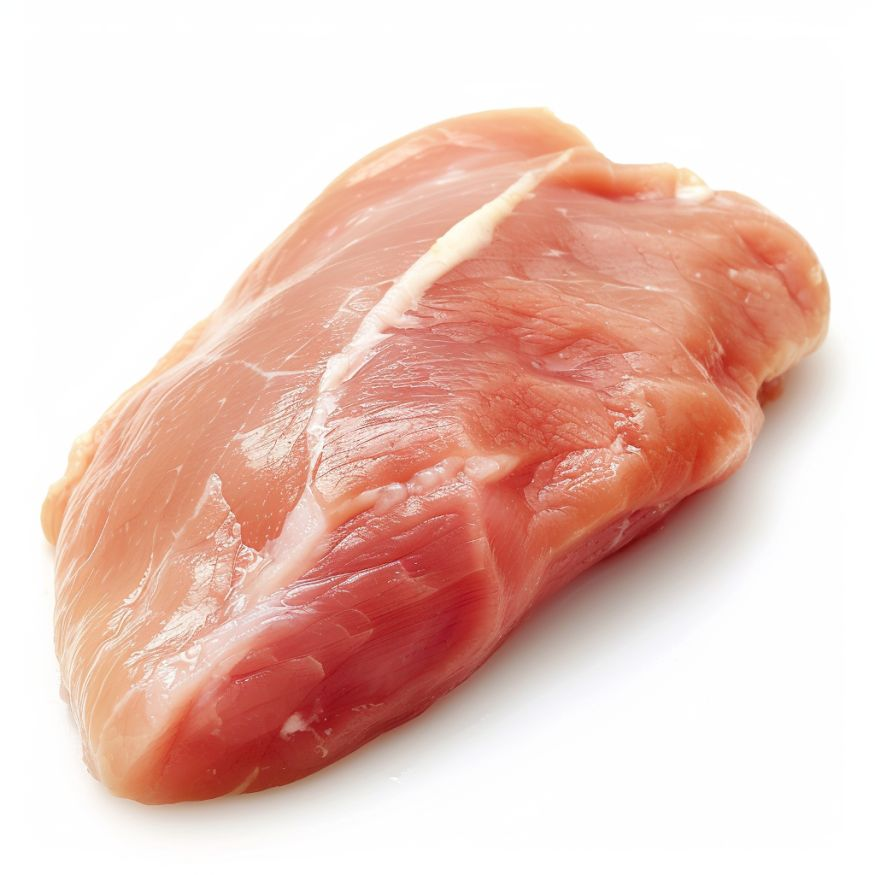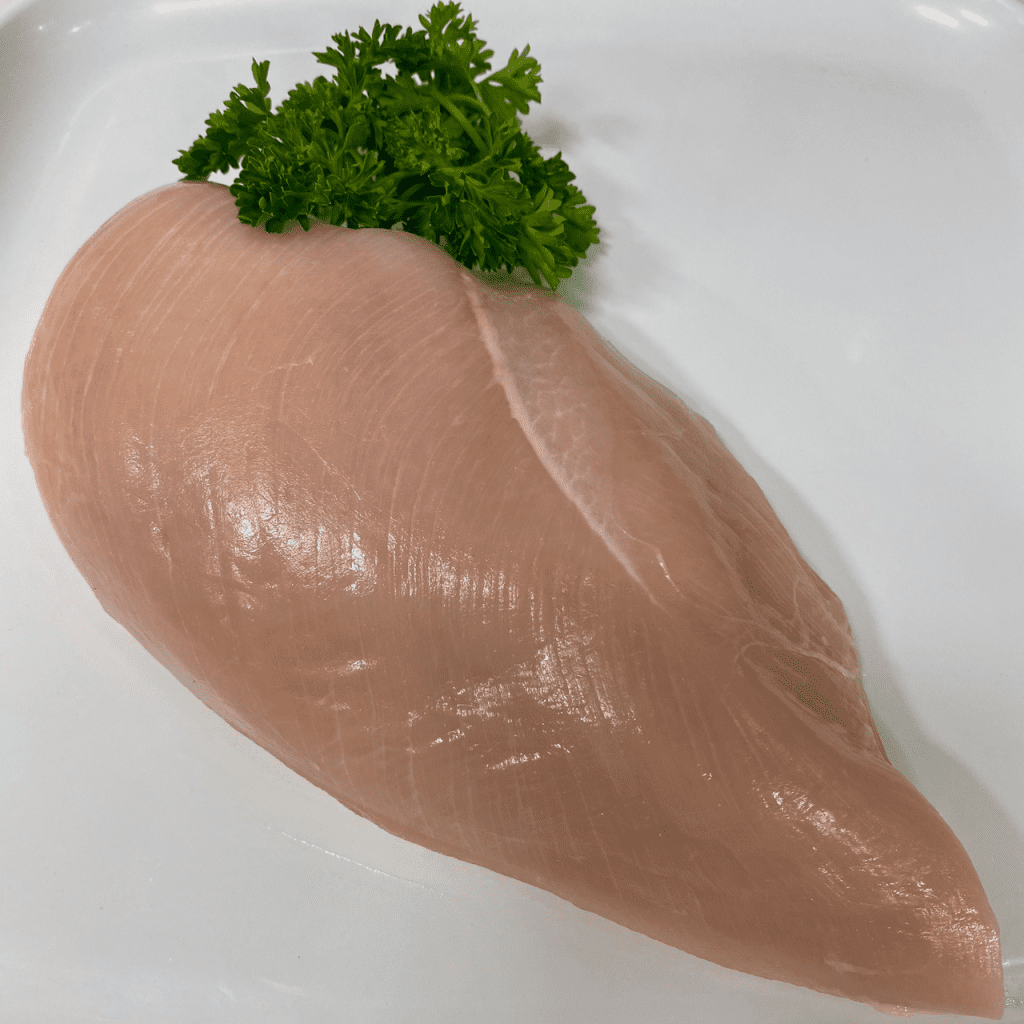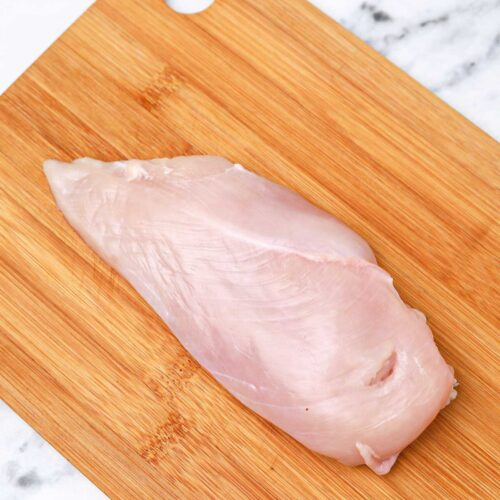Chicken breast is a popular choice for those pursuing a healthy diet. It’s lean, packed with protein, and versatile in various recipes. But you may have noticed that some chicken breasts at the store have strange white lines and a stringy texture. What’s behind these changes, and what do they mean for your health? Let’s dive into the details to understand what causes these peculiar traits in store-bought chicken breasts and how they might affect you.
What Causes the Lines and Stringy Texture in Chicken Breasts?

The presence of lines and a stringy texture in chicken breasts is usually a result of modern farming practices. These abnormalities are often indicators of specific conditions tied to how chickens are raised today.
1. Rapid Growth Rates
Modern commercial chicken farming often emphasizes rapid growth. Chickens are bred to grow bigger, faster, which can lead to muscle disorders. The lines you see in chicken breasts, commonly referred to as “white striping,” are one such side effect. This condition occurs when the muscle fibers in the chicken grow too quickly, causing fat deposits to form between them.
These lines are essentially deposits of fat that have infiltrated the muscle tissue due to the bird’s rapid growth. While it helps farmers get larger chickens to market faster, this practice sacrifices the quality and integrity of the meat. Rapid growth also leads to “wooden breast” syndrome, where the meat becomes tough and rigid, another factor contributing to a stringy texture.
2. Myopathy and Muscle Disorders
The stringy texture is often a sign of myopathy, a condition that affects the chicken’s muscle tissues. Myopathy includes muscle abnormalities like white striping and woody breast. White striping gives the meat an unpleasant visual appearance, while woody breast makes the chicken’s texture tougher and drier.
Myopathy is linked to the same growth practices mentioned earlier. In essence, the chickens’ bodies can’t keep up with the rapid muscle growth, leading to muscle degeneration. This degeneration causes the muscles to weaken and develop fibrous strands, which result in a stringy texture when cooked.
3. Poor Meat Quality and Nutritional Changes
The lines and stringy texture can also indicate reduced meat quality. When chickens grow too quickly, the quality of their meat suffers. As a result, the chicken breast not only looks different but also has a different nutritional profile. The lines and stringiness may suggest lower protein content and increased fat content, making it a less healthy option.
These changes aren’t just aesthetic or related to taste; they signify an overall reduction in the meat’s nutritional value. Many consumers seek chicken for its high protein and low-fat content. However, these modified chicken breasts often contain higher fat levels and less protein than traditional, slower-growing chickens.
Health Implications of Stringy, Lined Chicken Breasts
The appearance of these lines and stringiness in chicken breasts is more than just a visual or textural concern. It can impact the nutritional value and potentially affect your health.
1. Lower Protein Content
As mentioned earlier, white striping and woody breast conditions can result in lower protein content. If you’re eating chicken breasts to increase your protein intake, these abnormalities could mean you’re not getting as much protein as you think. The muscle degeneration that causes these lines disrupts the protein structure, which means you might need to consume more of this chicken to meet your protein needs.
2. Higher Fat Content

The lines visible in the chicken breasts are essentially fat deposits that have developed within the muscle fibers. Not only does this mean a higher fat content, but it also indicates a reduction in the lean quality of the chicken breast. This fattier meat may also contain a higher level of saturated fats, which can be detrimental to heart health over time if consumed in excess.
3. Potential Exposure to Chemicals and Antibiotics
Rapid growth in chickens can sometimes involve the use of antibiotics, hormones, or growth-promoting chemicals. While strict regulations govern these practices in many countries, there is ongoing debate and concern about the potential health risks of consuming chicken that may have been exposed to these substances. Some believe that the presence of white striping and stringy textures may indirectly signal the influence of growth-promoting agents, though more research is needed to draw firm conclusions.
How These Traits Affect Cooking and Taste
The lines and stringy texture don’t just alter the chicken’s appearance and nutritional value; they can also impact its flavor and cooking performance.
1. Tougher Texture
When chicken breasts have a stringy texture, they’re often tougher and harder to chew. This toughness is a result of the muscle fibers breaking down unevenly due to the rapid growth conditions. Cooking these chicken breasts can sometimes make the texture even more unpleasant, as the meat becomes dry and stringy instead of tender and juicy.
2. Lack of Flavor

Compared to high-quality chicken, these affected breasts lack the rich, natural flavor many expect from poultry. The increased fat and altered muscle structure can lead to a muted flavor that doesn’t hold seasoning as well. The flavor profile becomes less satisfying, which may leave you disappointed in your meal.
3. Moisture Loss During Cooking
Chicken breasts with white striping and woody textures tend to lose moisture more quickly during cooking. When you cook these chicken breasts, you may notice that they become dry much faster than other cuts. This moisture loss is due to the changes in muscle fiber caused by rapid growth and myopathy, leading to less satisfying and potentially unappetizing meals.
Tips for Choosing High-Quality Chicken Breasts
If you’re looking to avoid chicken breasts with these lines and textures, there are a few strategies you can use to make better choices at the store.
a) Look for Organic or Free-Range Options
Organic and free-range chickens are generally raised without antibiotics or hormones and often have slower growth rates. This method results in healthier, more naturally formed muscles. These options may cost more but are less likely to have white striping or woody breast conditions.
b) Check the Label for Certified Quality Assurance

Look for quality assurance certifications on the packaging, such as USDA Organic, Certified Humane, or similar labels. These certifications indicate that the chickens have been raised according to specific standards that promote slower growth and healthier living conditions.
c) Inspect the Meat’s Appearance
Before purchasing, inspect the chicken breasts for visible white lines and an overly stringy appearance. Higher-quality chicken breasts should look smooth and firm without pronounced lines. Choosing cuts that look fresher and more natural can lead to a more enjoyable and nutritious meal.
Conclusion: Make Informed Choices for Better Health and Flavor
Understanding why chicken breasts at the store have lines and a stringy texture can help you make informed choices for your health and culinary enjoyment. These traits often result from rapid growth practices that prioritize quantity over quality. By choosing organic or free-range options, looking for quality certifications, and inspecting the meat’s appearance, you can find chicken that’s not only healthier but also tastes better.
When it comes to your diet, every choice counts. So, next time you’re at the store, keep an eye out for these characteristics, and select chicken breasts that align with your health goals. Your taste buds—and your body—will thank you.


